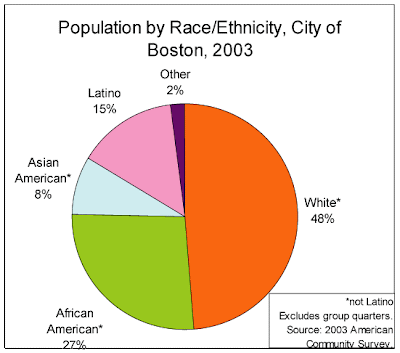 |
| North view from the Prudential Building (the tallest building) The Boston's Prudential Building top view provides a geological history of the city. From the top of the building, visitors can see the remnants of exploding volcanoes, glacial debris, and colliding continents. The Wisconsin Ice Sheet, the last glacier to cover New England, formed Cape Cod and the islands of Martha's Vineyard and Nantucket. Around Boston, the glacier left dozens of drumlins and bowl-shaped hollows which formed most of the ponds of Boston’s Emerald Necklace, a chain of parks and parkways. At the Middlesex Fells Reservation, aka the “Fells,” a Metropolitan Park System of Greater Boston, many can hike or mountain bike among 630-million-year-old volcanic rocks. The reservation comprised of 2,060 acres of wetlands and oak forests. 16 kilometers up the coast from the Fells is Castle Rock in Marblehead Neck, a favorite field trip of geology classes and rock climbers due to its interesting "swirled" texture. The 600-million-year-old volcanic rock was the remnant of the explosive volcanoes that once dominated the Boston area, before they eroded away. In addition, the Squaw Rock Park, just south of downtown Boston, offers a look at some 570-million-year-old rocks, which some researchers thought were deposited during the ice age period. These ancient sedimentary rocks can be found along the park's small northern beach, and offers an exquisite view of Boston Harbor and the Boston skyline. |

















